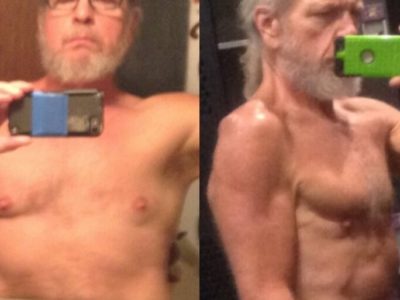Do you feel like you’re not able to stick with your eating habits? Like you have that roller coaster feeling when it comes to food of doing really well for a while and then doing really “poorly”?
This is because of what we call the start-and-stop cycle, and there are a few behaviors that are so common and keep you in the cycle.
But first, let’s define what this start-and-stop cycle really is.
What is The Start-and-Stop Cycle?
The start-and-stop cycle is a continuous pattern that people can experience in pursuit of eating healthy that prevents them from experiencing a sense of balance, ease, peace, and freedom with food.
When you’re in the start-and-stop cycle, you find yourself eating “perfectly” for a period of time, but because it’s too restrictive and difficult to maintain for the long-term you end up getting off-track. That period is then followed by guilt which leads right into feeling like you need to “reset.”
The challenging thing with the start-and-stop cycle is that, in most cases, you’re truly trying to eat well and do what you think is best for your health, but these eating behaviors are actually the very things preventing you from being consistent with your healthy eating habits, and in some cases, could even lead to unhealthy eating behaviors.
Let’s take a closer look at each stage of the start-and-stop cycle to better understand what may be causing you to get stuck in this cycle and where would be the best place for you to focus to move out of the cycle.
The Off-Track Phase
The off-track phase happens whenever something leads you off-track from what you’d like to be experiencing when it comes to your eating habits.
Feeling like you’ve gotten off-track with your eating habits is completely normal. We are human!
The difference is that those of us who practice mindful eating are able to navigate these very things with compassion for ourselves and realign or adjust with ease, without feeling guilty or shameful.
However, if you’re in the start-and-stop cycle, the off-track phase is followed by guilt, frustration or other negative emotions as a result of your choices.
There many factors that can lead you to get off-track including:
- Change in routine
- Emotional eating, like stress-eating or eating when you’re bored
- Distracted or mindless eating, like eating while watching TV
- Situational or environmental cues, like seeing office snacks or going out to eat
- Special occasions or holidays
- Health conditions
- Availability and access to foods
The Guilt Phase
After getting off-track, it can trigger a sense of guilt or “feeling bad” for the choices you made.
If the guilt is severe, it can also lead to feelings of helplessness and lack of control, as well as self-criticism, all of which can encourage poor self-esteem and low mood, impacting your mental health.
It also causes you to then go to then seek ways to try to undo the “bad” choice(s) you made and be more strict with yourself moving forward so it doesn’t happen again.
The Reset Phase
During the reset phase, you’re often practicing eating behaviors that are considered “ideal,” or “eating perfectly,” and are more often than not things that don’t work for your body or lifestyle for the long-term because they don’t have room for balance or flexibility. When you’re in the reset phase, you often have this feeling that you’re going “all in” on your healthy eating and lifestyle practices.
These behaviors and food choices tend to feel restrictive in one way or another — whether that’s literally eating less or avoiding certain foods or not allowing for any balance — and contribute to an unhealthy relationship with food.
Some of you may also practice eating behaviors that we consider unhealthy, and in some cases even disordered eating.
This phase will also look different for each person and may have different levels of severity as well.
For example, we’ve seen many people in this phase because they have so much nutrition knowledge and a strong desire to be healthy that they strived to eat “perfectly,” but the rules and habits they’re following aren’t sustainable for the long-term.
For others, we find they enter this phase after they’ve had a “bad” streak and they feel they need to undo what they’ve done.
There are many different levels of severity around this, so you may not even realize that what you’re doing is considered restrictive or in some cases disordered eating.
Here are a few examples of what the reset phase may look or feel like:
- Avoiding certain foods
- Counting calories, macros, points
- Going on a diet, detox, or plan
- Going “all-in”
- Your food choices don’t feel enjoyable or satisfying
- Striving to always eat “perfectly”
- Following trends or diets without first considering if they align with your body, lifestyle, and vision of health
- Constantly worrying about, or feeling preoccupied or obsessed with your food choices
- Disordered eating behaviors such as skipping meals, rigid nutrition or fitness routines, fasting or purging (note: if you are practicing any of these behaviors, we encourage you to sign up for a free exploration call to see how we can support you through 1:1 wellness coaching.)
Anytime you follow any guideline that is too restrictive and won’t support you for the long-term, creates that mentality of “can’t have,” “shouldn’t eat,” “aren’t allowed to have,” “off-limits,” etc. and make you hyperaware, hypersensitive, and focused on that food choice. Avoiding foods can also cause you to develop an unhealthy relationship with food, which takes you farther away from long-term wellbeing.
Then when you’re around foods or in situations that make it challenging for you to follow your strict rules, you’re more likely to overindulge (in some cases binge), leading into the off-track phase and repeating the cycle.
What Keeps You Stuck in the Cycle and Prevents Life-Long Eating Habits
This cycle continues to repeat itself, following similar variations of the same pattern, until you make a conscious decision to seek out a solution that doesn’t require you to restrict or feel guilty.
One of our members shared the reason why she joined The Method was because she has been struggling with the start-and-stop cycle for 30 years.
She finally decided that she no longer wanted food to preoccupy her mind. She didn’t want to be stressed out about her food choices. She wanted to love and feel compassionate with the body that’s allowed her to experience a beautiful life for years, rather than feel like an enemy with it. She wanted to feel confident that her actions were supporting how she felt on a daily basis and her long-term health.
Are the actions you’re taking keeping you in this start-and-stop cycle? Or are they helping you to find peace and ease with consistently eating well?
How Mindful Eating Helps You Get Out of The Cycle
The cycle will continue because those choices, behaviors, and mindsets don’t help you identify, navigate, and overcome the potential challenges you face on your wellness journey.
And this is where mindful eating plays such an important role in your journey.
With mindful eating, our goal is to become more aware of what we eat, how we eat, and why we eat so we can take actions that help us better align with what our unique bodies want and need. When we do that, we’re better able to get to the root cause of many of our unhealthy eating behaviors and how to overcome challenges in a way that supports us in creating life-long healthy eating practices.
1. Bring Awareness to Your Body and Experience Around Food
With my mindful eating method, we first practice bringing awareness to our body and experience around food. We use check-in strategies, journaling and mindfulness to become more aware of what, how, and why we eat.
This helps us become more aware of our eating habits and tendencies so we have awareness around what works and what doesn’t work for our bodies along with what works and what doesn’t work for our lifestyle.
2. You Practice Compassionate Curiosity to Uncover Your Challenges
With a strong sense of awareness around our eating behaviors, we can then use what I call compassionate curiosity to uncover the specific challenges we may be facing at that point in time, without judging ourselves. Our goal here is not to feel bad or guilty, but rather to simply get curious as to why we’re experiencing something, give ourselves compassion because we are human, and then find the best way to align moving forward.
Challenges will look different for everyone. For some, they may realize that they struggle with stress eating, while others realize that cooking is more of a block for them, and others may be struggling with digestive issues or a health condition and they’re searching for how to best support themselves with their diet.
3. You Identify Intentional Actions to Take that Align With Your Wellness Vision
With a newfound awareness of what you need to focus on and compassion for yourself on this journey, you can then identify what actions to take that will best help you align with your unique wellness vision. Unlike the start-and-stop cycle where it always brings you towards the reset phase, with mindful eating, we focus on building practices that will best support you for the long-term.
Again, this will be unique for each person, based on where they are in their journey and where they are in their life. But no matter what, each person has a clear idea of where they need to spend more time, develop certain skills, and deepen their practices to best support them.
Do You Feel Yourself in This Cycle?
Getting started is always the hardest part. Sometimes all we need is a little extra support!
It’s through my mindful eating method that you’re able to get out of this cycle. Our free guide for how to create healthy eating habits is filled with practices, journal prompts, and tips to support you. You can also join our mindful eating program.





